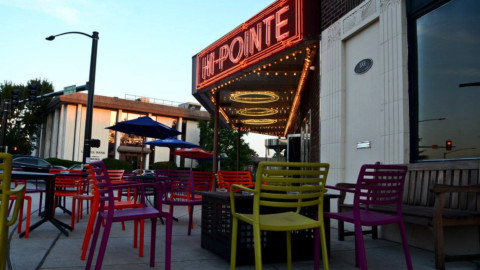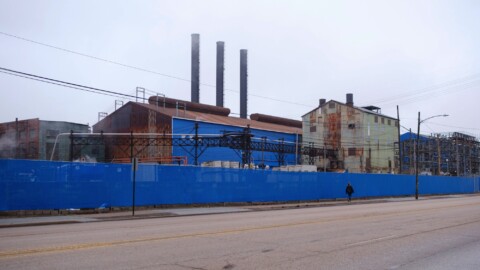
photo by Isaac Richardson
A manmade island complex just across the river from the Riverview neighborhood in North St. Louis, Chouteau Island contains the eastern leg of the Chain of Rocks Bridge, a popular fishing area, and miles of trails.

photo by Isaac Richardson

photo by Monica Tirre

photo by Theresa Harter

photo by Joe Harrison
Chouteau Island is a man-made, three island complex (consisting of Chouteau, Gabaret, and Mosenthein) that was created when the chain of rocks were installed and further defined by shipping channels carved out in the 1950’s. Today, the Island complex is comprised of over 5,000 acres (or about 4 Forest Parks!), that are a mix of private and public lands. In the late 90’s a plan was hatched to develop parts of the trio for hiking and biking, but implementation fizzled as money and interest dried up in the early 2000’s.

photo by Jason Gray

photo by Monica Tirre

photo by Anne Warfield

photo by Sue Rakers
The Chain of Rocks Water Treatment Plant, on the Missouri side, went into operation in 1894, and by 1915 (with the construction of its second intake tower in the middle of the River), the facility was the largest by volume in the world. This is significant for Chouteau Island because the two intake towers within the River nearby and the miles of shallow, rocky ledges (the natural chain of rocks) south of them made this section of waterway north of the city among the most difficult to navigate for larger vessels in all of the navigable length of the Mississippi River. In fact, during lower water, it was nearly (if not fully) impossible for the largest river boats. To combat this, the Army Corp of Engineers designed and built the Chain of Rocks Canal in the 1940’s: first by dredging the canal that forms the east side of Chouteau Island, and then by depositing bargeload after bargeload of massive rocks across the River just south of the intake towers. The rock dam, what most people are referring to when they mention the “chain of rocks”, raises the level of the River above it and in the Canal by three to ten feet, and makes the lock in the Canal possible.
Because of the Chain of Rocks Canal, the western boundary of Chouteau Island is the only portion of the Mississippi River, from Minnesota to Louisiana, without barge traffic.
Interesting to note: some Photo Flood members stumbled across the remains of another water treatment facility, including a crumbling tower and a large, concrete basin for holding water, both long abandoned in the Gabaret section of Chouteau Island. That site is still being researched and more info will be provided here once known.

photo by Shelly Cendroski

photo by Anne Warfield

photo by Jason Gray

photo by Diane Cannon Piwowarczyk
Opened in July 1929, the steel truss Chain of Rocks Bridge is perhaps the best known feature of Chouteau Island, and was constructed during a time before the aforementioned Canal was in existence. Riverboat traffic lent the Bridge its characteristic 30 degree turn (the private owners of the bridge originally wanted the bridge to be straight and to cross the River diagonally, but were vetoed by the Army Corps of Engineers- the turn was a compromise to keep the bridge span over the central channel perpendicular to the River). US Route 66 crossed the Mississippi River at Chain of Rocks Bridge, ensuring its usefulness during that era. Later, the Bridge was replaced by two modern structures just to its north, but a plan to scrap it for metal was halted because of the immense cost involved. The Bridge soon became a nearly forgotten relic.
Before restoration in the late nineties, the Chain of Rocks Bridge was in total disrepair. It was reopened in 1999 as a foot and bicycle bridge, and is now central to the push to convert more of Chouteau Island over to recreational use.

photo by Theresa Harter

photo by Sue Rakers

photo by Monica Tirre
Today, Chouteau Island is an incredibly rich, natural respite for residents near St. Louis, on both sides of the River. Throughout the year, it provides vastly different experiences for those willing to make the venture there, from summertime fishing to wintertime bald eagle watching, and as it transitions more and more over to public use, no doubt it will become a place of memories for many new generations.

photo by Joe Harrison

photo by Jason Gray

photo by Diane Cannon Piwowarczyk

photo by Amanda Krebel-Joern








